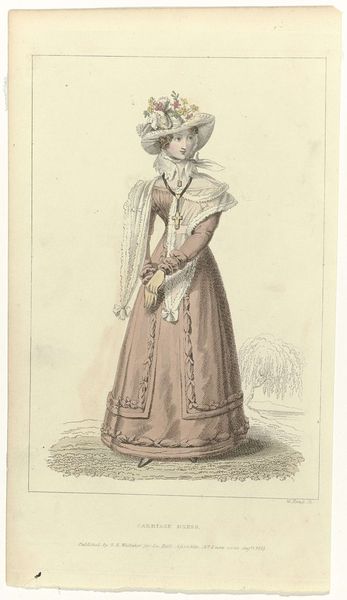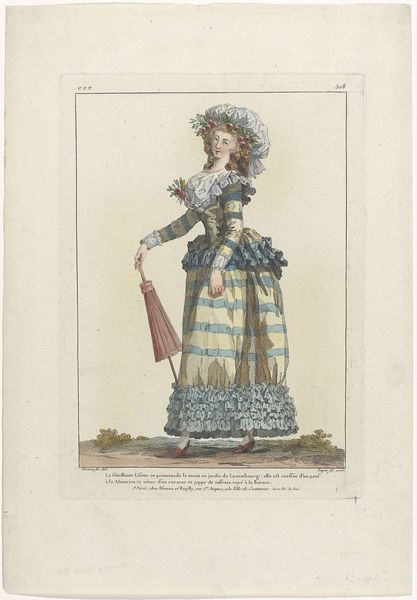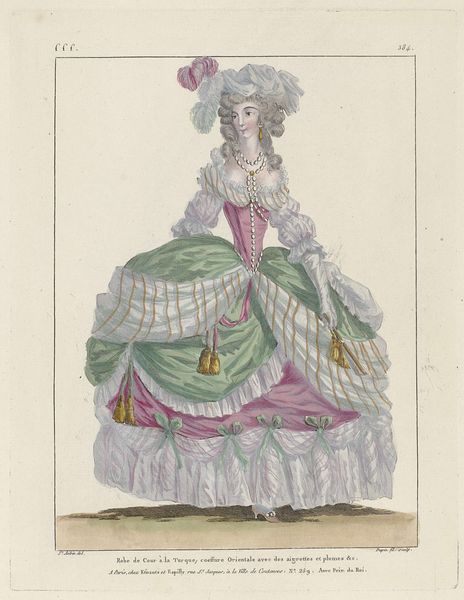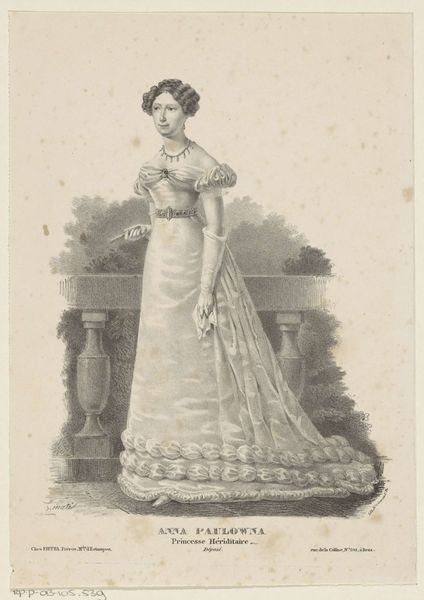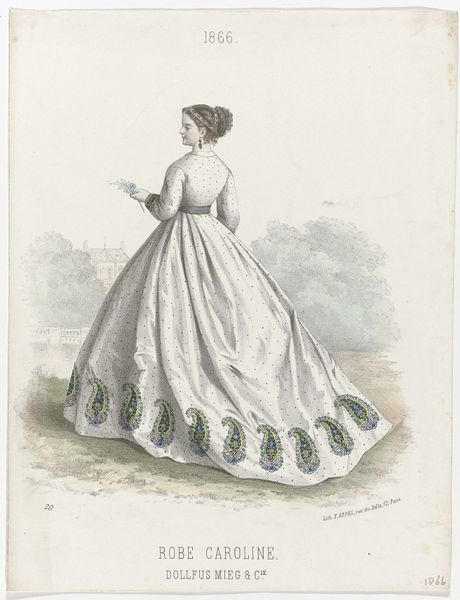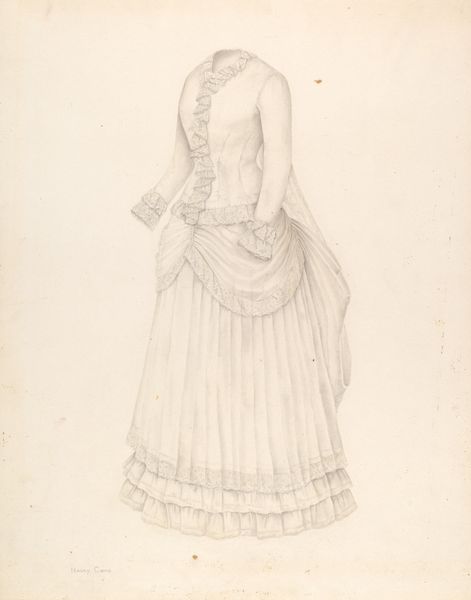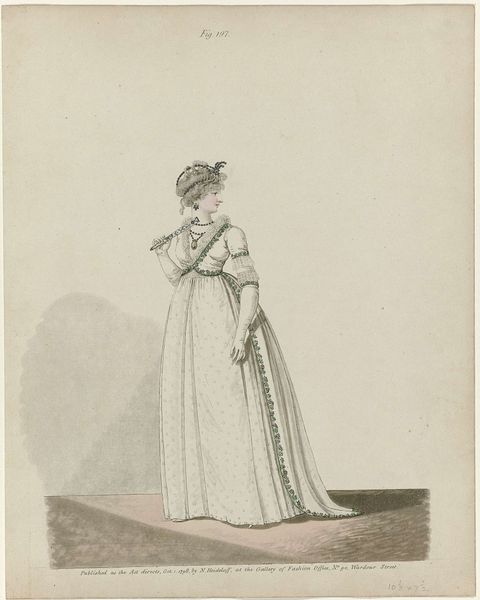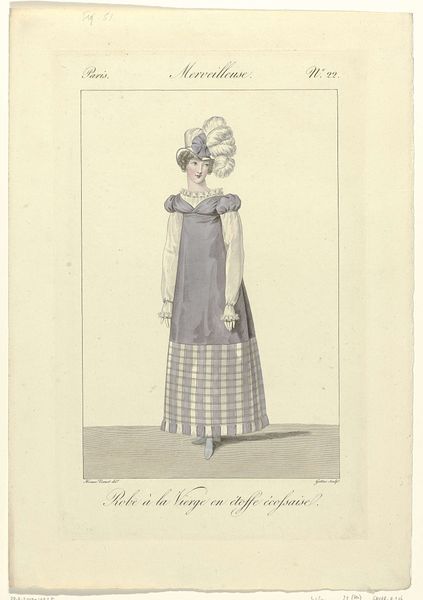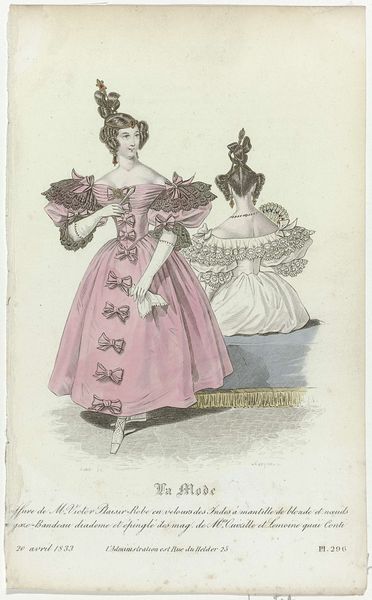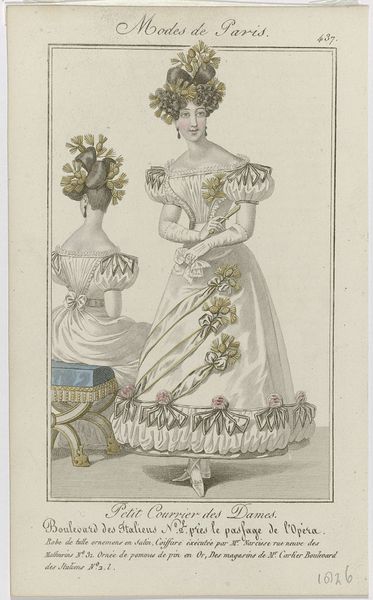
print, watercolor
#
portrait
# print
#
figuration
#
watercolor
#
romanticism
#
watercolour illustration
#
dress
Dimensions: height 229 mm, width 140 mm
Copyright: Rijks Museum: Open Domain
Editor: This is "La Belle Assemblée, 1 June 1822, No. 162: Walking Dress," a watercolor print from 1822, created by an anonymous artist. I'm struck by how precisely rendered the details of the dress are; you can almost feel the texture of the fabric. What stands out to you when you look at this image? Curator: This image, beyond simply illustrating fashion, is brimming with social cues. Consider the umbrella, for instance. Beyond its practical use, what symbolic meaning might it hold for this woman and her station? Editor: I suppose it suggests refinement and leisure; someone who doesn't need to work outdoors. Curator: Exactly. Think about the cultural narrative woven into clothing and accessories. The delicate colour palette, the feathered bonnet, all of these symbols communicate something deliberate to an audience familiar with the period’s visual vocabulary. How do you think contemporaries viewed this figure, understanding these cues? Editor: Perhaps as a representation of ideal femininity or aspiration, a visual shorthand for status and taste? Almost like a codified language. Curator: Precisely. This “walking dress,” becomes less about mere utility, and more a symbolic expression – how we fashion ourselves to be seen, and perhaps, even remembered. Are there echoes of this in how we communicate status through fashion today, do you think? Editor: Absolutely! It's amazing how clothes become cultural touchstones and emotional carriers across time. Curator: Indeed. Images like this are cultural memory made visible. We start to realize fashion is more than just fabric, it's a language.
Comments
No comments
Be the first to comment and join the conversation on the ultimate creative platform.

